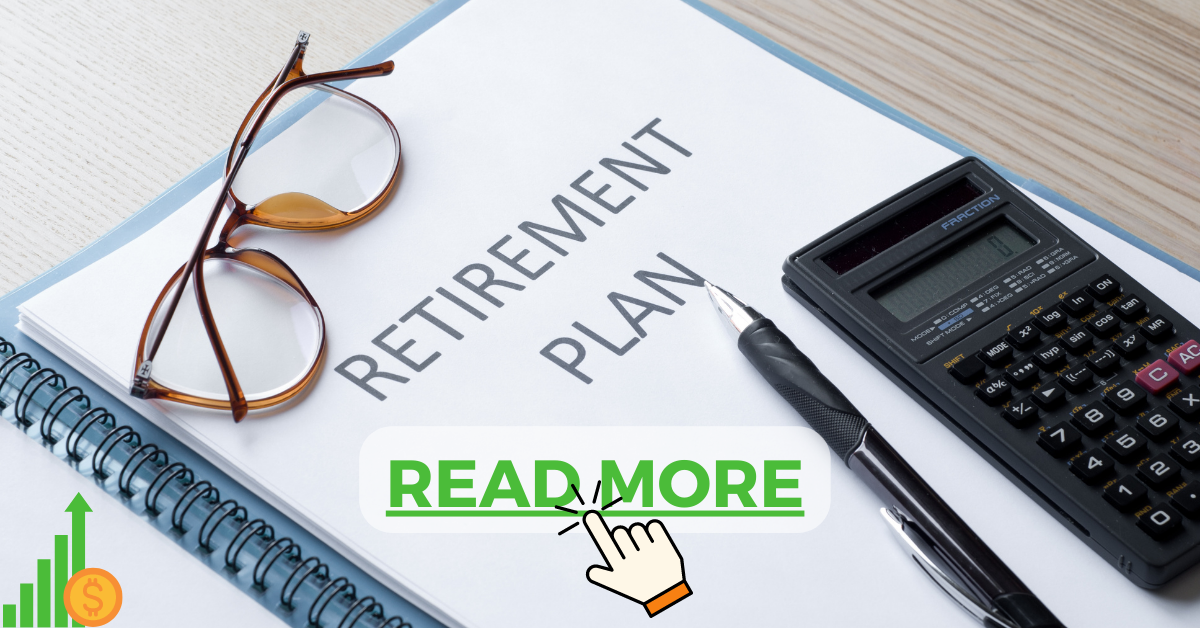Smart Retirement Plan Strategies for a Secure Future
Retirement planning is an essential aspect of ensuring a secure financial future for yourself and your loved ones. It allows you to build a nest egg and generate a reliable source of income to sustain your lifestyle after your working years. While the thought of retirement planning may seem overwhelming, with the right strategies and guidance, it can be a manageable and fulfilling process.
At the core of a smart retirement plan strategy is a solid understanding of retirement planning essentials, including saving for retirement, generating retirement income, and navigating risks. In this article, we will explore these key aspects of retirement planning and provide insights to help you create a comprehensive and effective retirement plan.
Key Takeaways:
- Retirement planning is crucial for a secure financial future.
- The core elements of a smart retirement plan include saving for retirement, generating retirement income, and navigating risks.
- With the right strategies and guidance, retirement planning can be a manageable and fulfilling process.
Understanding Retirement Planning
Retirement planning requires a comprehensive understanding of the various elements involved. One of the first steps in retirement planning is to determine your retirement savings goals. This is where retirement calculators come in handy. There are many free online retirement calculators that can help you estimate the amount you need to save for retirement.
Another crucial aspect of retirement planning is understanding the different retirement benefits and options available. Employer-sponsored plans, such as 401(k)s and pension plans, are common options for retirement savings. It’s important to evaluate these options carefully to determine which ones align with your retirement goals and financial situation.
| Retirement Benefits | Description |
|---|---|
| Pension Plans | A type of retirement plan sponsored by employers and designed to provide employees with a defined benefit upon retirement. |
| 401(k)s | A retirement savings plan that allows employees to contribute a portion of their salary on a pre-tax basis. Employers may also offer a matching contribution. |
| IRAs | Individual retirement accounts that allow individuals to save for retirement with tax advantages. There are traditional and Roth IRA options available. |
| Social Security | A government program that provides retirement, disability, and survivor benefits to eligible individuals. |
Understanding retirement options is just one part of the equation. Saving for retirement is also crucial. The earlier you start saving for retirement, the better. Compound interest can make a significant impact on your savings over time. Investing your savings can also help you grow your retirement fund.
Whether you choose to invest in stocks, bonds, mutual funds, or other investment vehicles, it’s important to evaluate your comfort level with risk and diversify your investments to minimize risk. As with any investment strategy, it’s important to do your research and understand the potential risks and rewards.
Ultimately, understanding retirement planning involves considering all of these elements and developing a comprehensive strategy that aligns with your retirement goals and financial situation. With careful planning and the right investment approach, you can enjoy a secure and comfortable retirement.

Saving for Retirement
Saving for retirement is crucial to building a secure financial future. Starting as early as possible is key to maximizing your retirement savings potential. By investing in a diverse range of assets, you can increase your returns and reduce risks.
| Strategies for building retirement savings: |
|---|
| 1. Start saving early: The earlier you start saving for retirement, the more time your money has to grow. |
| 2. Set a savings goal: Use a retirement calculator to determine how much you should save to meet your retirement goals. |
| 3. Make regular contributions: Set up automatic savings contributions from each paycheck to ensure consistency in savings. |
| 4. Take advantage of employer-sponsored plans: Check with your employer to see if they offer any retirement savings plans, such as a 401(k). |
| 5. Invest in a diversified portfolio: Investing in a variety of assets can help reduce risks and maximize returns. |
By taking these steps and consistently saving over time, you can secure a strong financial foundation for your retirement years.

Creating Retirement Income
Creating a reliable source of retirement income is a critical component of a smart retirement plan. While there are various options available, it’s important to consider factors such as your income needs, risk tolerance, and age when developing a strategy.
Exploring Retirement Income Options
There are several options for generating retirement income, including annuities, investments, and social security benefits. An annuity is a contract between you and an insurance company where you make a lump-sum payment in exchange for a regular income stream. With investments, you can use dividend-paying stocks, bonds, or mutual funds to generate income. It’s important to remember that market volatility can impact your investment returns. Social security benefits are a reliable source of income for retirees, but the benefits you receive will depend on your work history and age.
Did you know? Social Security benefits are designed to replace about 40% of pre-retirement income. To maximize your benefits, consider delaying your claim until you reach full retirement age or even later.
Diversifying Your Retirement Portfolio
Diversifying your retirement portfolio can help minimize risk and ensure you have a reliable source of income over the long term. A diversified portfolio may include a mix of stocks, bonds, and other investments. By spreading your investments across different asset classes, you can minimize the impact of market volatility on your portfolio. It’s important to regularly review and adjust your portfolio as your retirement needs and goals change.

Consulting a Financial Advisor
Developing a retirement income strategy can be complex, and it’s important to seek the guidance of a financial advisor. A professional can help you evaluate your retirement goals and develop a plan that aligns with your unique needs and circumstances.
Tip: Be sure to ask your financial advisor about any fees or commissions associated with retirement income products or services.
Understanding Pension Plans
If you’re fortunate enough to have a pension plan, understanding how it works and how to make the most of it is crucial to securing your retirement income.
A pension plan is a retirement plan that is generally funded by your employer. It provides you with a regular income stream during retirement and is typically based on your years of service and earnings while employed.
There are two main types of pension plans: defined benefit and defined contribution. With a defined benefit plan, the employer is responsible for providing a set benefit amount upon retirement. With a defined contribution plan, the employer contributes a set amount to the employee’s retirement account, and the employee is responsible for managing the investments and determining the retirement income.
It’s important to evaluate and manage your pension plan effectively. Factors to consider include the plan’s funding level, investment strategy, and potential risks. You should also stay informed about any changes to the plan, such as adjustments to benefit amounts or contribution rates.
Make sure to review your pension plan regularly and take advantage of any tools or resources provided by your employer to help you understand and manage your retirement income.

Maximizing Retirement Benefits
When it comes to maximizing your retirement benefits, it’s important to evaluate all your options. Employer-sponsored plans, individual retirement accounts (IRAs), and government programs all offer potential benefits, but you need to determine which ones are right for you.
Determine Your Eligibility
Before you can begin to maximize your retirement benefits, you need to determine your eligibility for different programs. This includes understanding the requirements for employer-sponsored plans, Roth IRAs, traditional IRAs, and government programs such as Social Security and Medicare.
| Program | Eligibility Criteria |
|---|---|
| Employer-Sponsored Plans | Must be employed by a company that offers a retirement plan |
| Roth IRAs | Must have earned income and meet income limitations |
| Traditional IRAs | Must have earned income and be under age 70 1/2 |
| Social Security | Must have worked and paid Social Security taxes for a certain number of years |
| Medicare | Must be 65 or older or have certain disabilities |
It’s important to consider all your options and determine which programs you’re eligible for and would benefit most from. For example, if your employer offers a retirement plan with a matching contribution, it may be wise to focus on maximizing that benefit before contributing to an IRA.
Understand Tax Implications
Another important consideration when maximizing your retirement benefits is understanding the tax implications of different programs. For example, Roth IRAs are funded with after-tax dollars, meaning contributions are not tax-deductible but withdrawals are tax-free. On the other hand, traditional IRAs are funded with pre-tax dollars, meaning contributions are tax-deductible but withdrawals are taxed as income.
It’s important to evaluate your tax situation and consider how different programs may impact your overall tax burden in retirement.
Consider Your Investment Options
When it comes to maximizing your retirement benefits, it’s also important to consider your investment options. If you have an employer-sponsored plan or IRA, you can typically invest in a variety of funds, including mutual funds, exchange-traded funds (ETFs), and individual stocks and bonds.
It’s important to diversify your investment portfolio and consider factors such as risk tolerance, time horizon, and overall retirement goals.

Maximizing your retirement benefits requires careful consideration and planning. By understanding your eligibility, tax implications, and investment options, you can make informed decisions and create a retirement plan that maximizes your potential benefits.
Planning for Retirement Lifestyle
Planning for retirement lifestyle is an essential aspect of creating a smart retirement plan. Retirement should be a time to relax and enjoy the fruits of your labor, but achieving this requires careful consideration of your expenses and income needs.
Understanding your retirement expenses is the first step in creating a budget that aligns with your retirement income. You’ll need to estimate your expenses for housing, food, healthcare, transportation, and other day-to-day expenses. Considerations such as travel, hobbies, and unexpected expenses should also be factored in.
Managing healthcare costs is another critical aspect of retirement planning. Healthcare expenses tend to increase as we age, so it’s essential to plan for this. Consider the cost of Medicare premiums, supplemental insurance, and out-of-pocket expenses when estimating your healthcare costs.
Creating a budget that aligns with your retirement income requires careful consideration of your income sources. Beyond your retirement savings, other potential sources of income include social security benefits, pension plans, and investment income.
As your retirement lifestyle evolves, it’s essential to adapt your retirement plan accordingly. For example, suppose you find that you have more free time than anticipated. In that case, you may want to consider taking up new hobbies or planning more travel to make the most of your retirement years.
Ultimately, planning for your retirement lifestyle is about creating a sustainable and enjoyable future. By estimating your expenses, managing your healthcare costs, and creating a budget that aligns with your sources of income, you can achieve a comfortable retirement lifestyle that meets your needs and goals.

Navigating Market Volatility and Risks
Investing for retirement comes with inherent risks. The market can be volatile, which can impact the value of your investments and your retirement income. It’s important to understand these risks and have a plan in place to manage them.
One strategy to manage risks is to diversify your portfolio. This means investing in a mix of assets, including stocks, bonds, and other securities. By diversifying, you can help mitigate the impact of market fluctuations on your overall portfolio.
Another risk to consider is inflation. Over time, the cost of goods and services tends to rise, which can reduce the purchasing power of your retirement income. To combat this, consider investing in assets that have historically kept pace with inflation, such as real estate or commodities.
Managing Investment Risks
When investing for retirement, it’s important to be mindful of potential risks and develop a plan to manage them. One way to manage investment risks is to establish an appropriate asset allocation. This means dividing your portfolio among different asset classes based on your risk tolerance and investment goals.
It’s also important to regularly review and adjust your investments based on market conditions. This can help ensure that your portfolio remains aligned with your long-term goals and objectives.
Adapting Retirement Strategies
As you approach retirement age, it’s important to reassess your retirement strategies and make any necessary adjustments. This may include revisiting your asset allocation, adjusting your withdrawal strategy, or exploring new income-generating opportunities.
It’s also important to have a contingency plan in case unexpected events, such as a market downturn or unexpected expenses, occur. By having a plan in place, you can help ensure that your retirement income remains stable, regardless of external factors.

In conclusion, navigating market volatility and risks is an important aspect of retirement planning. By diversifying your portfolio, managing investment risks, and adapting your retirement strategies as needed, you can help ensure a secure and stable retirement income.
Conclusion
Retirement planning is a crucial aspect of ensuring a secure future for yourself and your loved ones. By understanding the key elements of retirement planning, including saving for retirement, creating a reliable retirement income, and maximizing retirement benefits, you can build a strong retirement strategy that aligns with your lifestyle goals and budget.
It’s important to regularly review and adjust your retirement plan, especially in the face of market volatility and risks. By navigating these challenges and adapting your strategies as needed, you can stay on track towards a comfortable retirement.
Remember, the earlier you start planning for retirement, the better off you’ll be in the long run. So don’t hesitate to attend Kiana Danial’s Invest Diva Free Masterclass for additional guidance on retirement planning. By taking action now, you can achieve the retirement lifestyle you’ve always dreamed of.
FAQ
Q: What is retirement planning?
A: Retirement planning refers to the process of determining how much money you will need for a comfortable retirement and creating a strategy to achieve those financial goals. It involves saving for retirement, considering different retirement benefits and options, and creating a reliable retirement income.
Q: How do I save for retirement?
A: Saving for retirement can be accomplished through various strategies. It is important to start saving as early as possible and take advantage of investment opportunities. You can contribute to retirement savings accounts such as 401(k)s or individual retirement accounts (IRAs) and consider diversifying your investments.
Q: How can I create a reliable retirement income?
A: Creating a reliable retirement income requires careful planning. You can explore options such as annuities, investments, and social security benefits. Diversifying your investment portfolio can also help ensure long-term income stability.
Q: What are pension plans?
A: Pension plans are retirement plans typically offered by employers. They provide employees with a fixed income during retirement based on factors such as salary and years of service. Pension plans can be an important part of your overall retirement strategy.
Q: How can I maximize my retirement benefits?
A: Maximizing retirement benefits involves identifying and utilizing various retirement options. You can take advantage of employer-sponsored plans, such as 401(k)s, and individual retirement accounts (IRAs). It is important to consider factors such as tax implications and the impact of benefit decisions on your overall retirement plan.
Q: How do I plan for my desired retirement lifestyle?
A: Planning for your desired retirement lifestyle involves estimating retirement expenses, managing healthcare costs, and creating a budget that aligns with your retirement income. It is important to adapt your retirement plan as your lifestyle evolves to ensure financial security.
Q: How do I navigate market volatility and risks in retirement planning?
A: Navigating market volatility and risks requires managing investment risks and diversifying your portfolio. It is important to regularly review and adjust your retirement plan based on market conditions. Stay informed and seek professional advice to make well-informed decisions.

